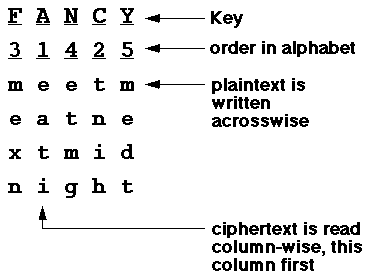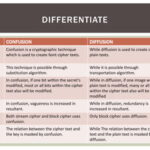What does it mean when someone claims, “I could cipher to the Rule of Three”? This phrase may seem enigmatic at first glance, but it alludes to a fascinating intersection of cryptography, historical practices, and mathematical principles. From ancient civilizations employing simple codes to modern-day encryption techniques, the concept of ciphers has undergone significant evolution. Understanding the meaning behind this phrase requires delving into both its historical context and its implications in the world of cryptography.
The Rule of Three, at its core, is a fundamental mathematical principle often used in ratios and proportions. It is essential to grasp the significance of numbers in the realm of communication, particularly when discussing ciphers. Ciphers transform plain text into obscured messages through a variety of techniques, primarily aimed at maintaining secrecy. The interplay between linguistic artifice and numerical precision is pivotal in appreciating the full scope of this phrase.
Historically, the practice of ciphering dates back thousands of years, with one of the earliest examples being the use of substitution ciphers in ancient Egypt. Hieroglyphics, often deemed a complex form of communication, served as a precursory example of how civilizations encoded their meanings. Fast forward to the Middle Ages, and we find the use of polyalphabetic ciphers, which not only showcased the ingenuity of their creators but also the burgeoning need for secure communication channels—particularly in political and military contexts.
As one explores the evolution of ciphers, it becomes evident that the notion of a “Rule of Three” emerges in various forms. In classical rhetoric, for instance, the Rule of Three suggests that ideas presented in threes are more humorous, satisfying, and effective than other numbers. This principle could easily apply to both the creation of ciphers and their deciphering. When one can effectively utilize a tripartite method in encoding a message, they may find their communications more robust and resilient against interception.
The phrase “I could cipher to the Rule of Three” hints at a specific methodology in encoding techniques, where one might employ a triadic symmetry. Imagine a cipher where three separate keys or methods are used in concert to encrypt information—a challenge that not only showcases creativity but also intellectual rigor. Beyond mere experimentation, it invites cryptographers to ponder the effectiveness of their systems. For example, how does one ensure that their encoded message, reliant on this triadic approach, remains impervious to potential misinterpretation or eavesdropping?
Taking a closer look at notable historical ciphers, we can see how varying strategies have resided under the broader umbrella of the Rule of Three. The infamous Caesar cipher, named after Julius Caesar, involved simple letter shifts for encryption. While not explicitly tripartite, its iterative nature can be viewed through a lens that appreciates the foundations of the Rule of Three. Subsequently, methods such as the Vigenère cipher introduced more complexity, using a keyword and altering shifts based on the letters of that keyword. Here, one can observe a more sophisticated triadic relationship between letters, shifts, and keywords, hinting at how ideas can interlink, much like the dynamics within the Rule of Three.
Moreover, the introduction of modern encryption techniques, such as symmetric and asymmetric encryption, further complicates our understanding of the phrase. Statistical analyses reveal that when coupling encryption keys (which can be likened to the rule of three), the level of security increases exponentially. Thus, the idea of ciphering through the lens of three gets expanded into a broader mathematical discourse in computer science and digital communication. Could it be that every complex cipher we encounter today—be it RSA or DES—can trace its roots back to these ancient principles of triadic significance?
As one contemplates the phrase “I could cipher to the Rule of Three,” it is worthwhile to pose the question: How often do we encounter triplet structures in our daily communication? Whether it be in literature, mathematical descriptions, or secretive dialogues, instances of threes are embedded deeply in cultural narratives. In cryptography, this highlights the dual importance of creativity and methodical thinking. A true cipher artist, capable of amalgamating these elements, stands to gain not only knowledge of historical practices but also a keener insight into the sublime beauty of numbers and patterns in communication.
The continued relevance of the Rule of Three in modern encryption cannot be overstated. As we advance into a digital era engulfed in data privacy concerns, understanding these historical foundations becomes imperative. The dance between simplicity and complexity, between the mundane and the extraordinary, is encapsulated in every cipher created and deciphered through the ages. To cipher to the Rule of Three is thus not merely an exercise in cryptography but a celebration of human ingenuity, language, and the instinct to communicate securely.
In conclusion, the phrase “I could cipher to the Rule of Three” invites us to explore a rich tapestry of historical context, mathematical foundations, and the evolution of cryptographic practices. It draws attention to the necessity of understanding both the art and the science behind every encoded message, urging modern-day cryptographers to reflect upon the importance of methodology in their craft. In this interplay between numbers and words, creativity flourishes, revealing layers of meaning just waiting to be uncovered in every cipher we encounter.









Leave a Comment